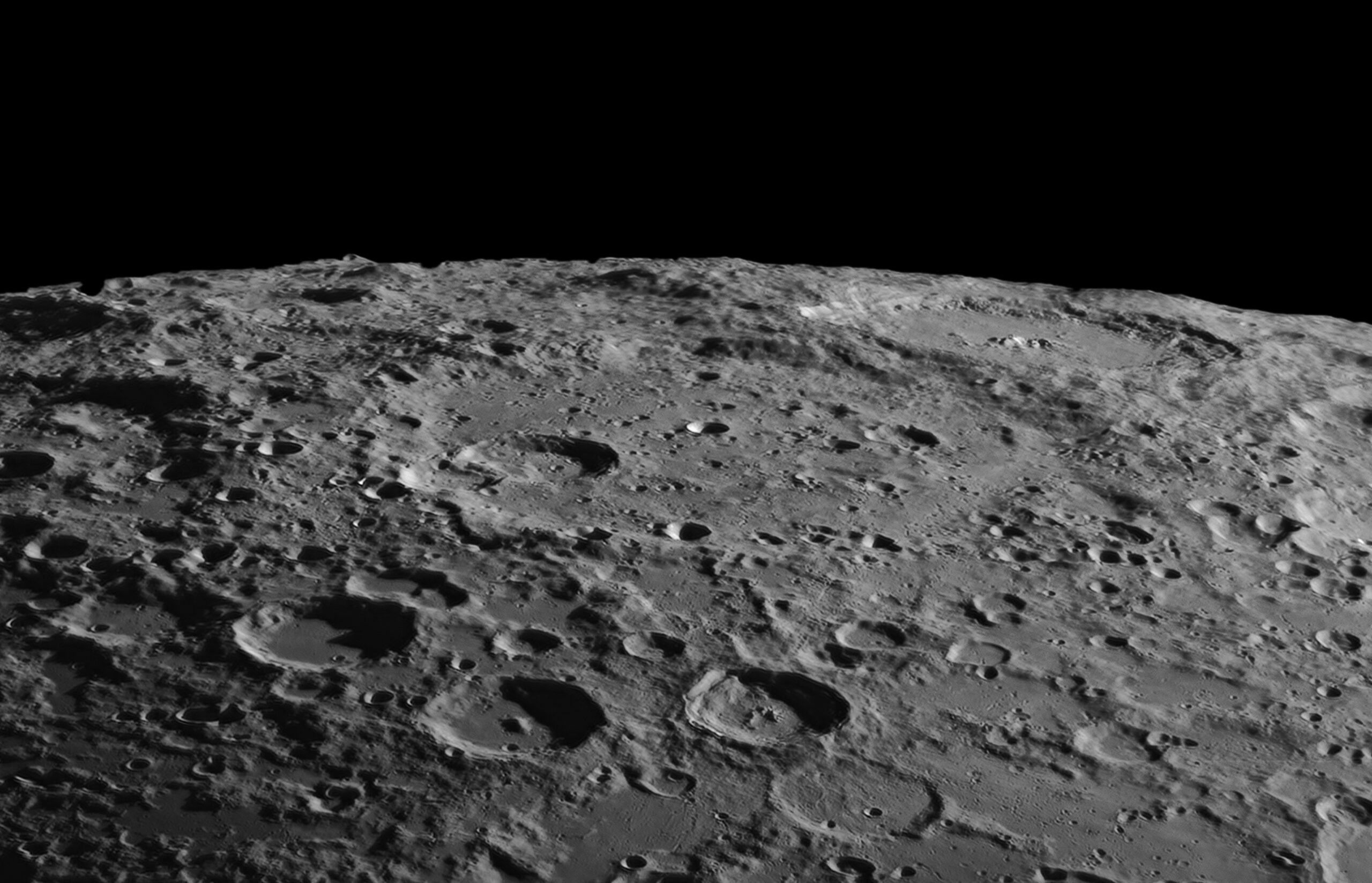Con un diametro massimo di oltre 300 km, Bailly è il cratere più grande dell’intera faccia visibile della Luna. Supera in dimensioni, e di molto, anche Clavius, largo “appena” 220 km. La posizione di Bailly prossima al polo Sud (quindi in piena zona di librazione) ne rende l’osservazione piuttosto difficile, il che spiega perché questa notevole formazione non ha la fama che merita.
(ENG) With a maximum diameter of more than 300 km, Bailly is the biggest crater over the entire visible face of the Moon. It also overwhelms Clavius, “only” 220 km wide. Bailly position close to the South pole (hence in full libration zone) makes its observation quite diffilcult, which explains why this remarkable formation has not the fame that deserves.
Bailly, Hausen, Le Gentil
Al centro dell’immagine è visibile Bailly, e nelle sue adiacenze, vicino al lembo lunare, altri due grandi crateri raramente ripresi: Hausen (a destra, con il picco centrale) e Le Gentil (sulla sinistra, poco visibile). Per realizzare questa immagine ho approfittato di una doppia librazione negativa molto favorevole (-6°20′ lat., -7° long.), che esponeva la superficie sud-occidentale della Luna, posizionando Bailly in maniera ottimale per l’osservazione. Occasioni come questa sono piuttosto rare: una manciata ogni anno, trascurando le condizioni di meteo e di seeing.
(ENG) Bailly is visible in the center of the image, and in its proximity, close to lunar limb, you can see two other great craters rarely imaged: Hausen (on the right, with the central peak) and Le Gentil (on the left, barely visible). For this image I got advantage of a very favourable double negative libration (-6°20′ lat., -7° long.), which exposed the south-western surface of the Moon placing Bailly crater optimally for observation. Opportunities like that are quite rare: a few every every year, neglecting weather and seeing conditions.
